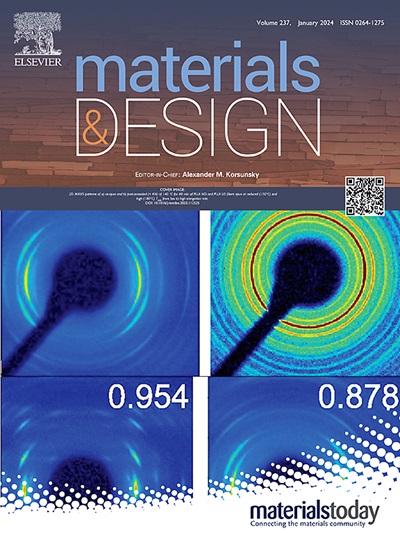Unveiling processing–property relationships in laser powder bed fusion: The synergy of machine learning and high-throughput experiments
IF 7.6
2区 材料科学
Q1 MATERIALS SCIENCE, MULTIDISCIPLINARY
引用次数: 0
Abstract
Achieving desired mechanical properties in additive manufacturing requires many experiments and a well-defined design framework becomes crucial in reducing trials and conserving resources. Here, we propose a methodology embracing the synergy between high-throughput (HT) experimentation and hierarchical machine learning (ML) to unveil the complex relationships between a large set of process parameters in Laser Powder Bed Fusion (LPBF) and selected mechanical properties (tensile strength and ductility). The HT method envisions the fabrication of small samples for rapid automated hardness and porosity characterization, and a smaller set of tensile specimens for more labor-intensive direct measurement of yield strength and ductility. The ML approach is based on a sequential application of Gaussian processes (GPs) where the correlations between process parameters and hardness/porosity are first learnt and subsequently adopted by the GPs that relate strength and ductility to process parameters. Finally, an optimization scheme is devised that leverages these GPs to identify the process parameters that maximize combinations of strength and ductility. By founding the learning on larger “easy-to-collect” and smaller “labor-intensive” data, we reduce the reliance on expensive characterization and enable exploration of a large processing space. Our approach is material-agnostic and herein we demonstrate its application on 17-4PH stainless steel.

求助全文
约1分钟内获得全文
求助全文
来源期刊

Materials & Design
Engineering-Mechanical Engineering
CiteScore
14.30
自引率
7.10%
发文量
1028
审稿时长
85 days
期刊介绍:
Materials and Design is a multi-disciplinary journal that publishes original research reports, review articles, and express communications. The journal focuses on studying the structure and properties of inorganic and organic materials, advancements in synthesis, processing, characterization, and testing, the design of materials and engineering systems, and their applications in technology. It aims to bring together various aspects of materials science, engineering, physics, and chemistry.
The journal explores themes ranging from materials to design and aims to reveal the connections between natural and artificial materials, as well as experiment and modeling. Manuscripts submitted to Materials and Design should contain elements of discovery and surprise, as they often contribute new insights into the architecture and function of matter.
 求助内容:
求助内容: 应助结果提醒方式:
应助结果提醒方式:


